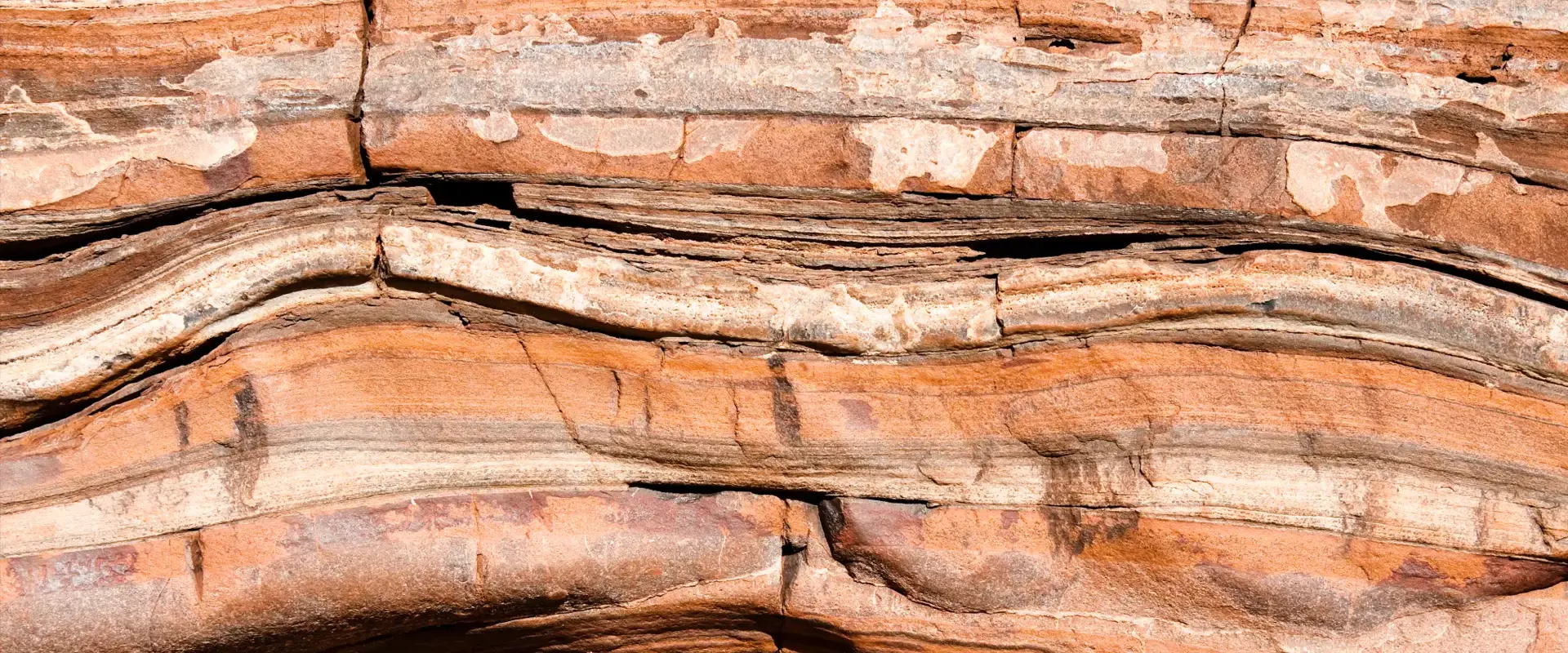
Badcall, Scourie

Scourie, Badcall. © Rob Butler
Continental crust is formed principally by partial melting of the mantle. So the early crust contains the products of melting, and therefore gives us clues to the tectonic processes with which the melting was associated. The ancient parts of the continents, formed during the Archean (4000 to 2500 million years ago), tell of the growth of continents and the role of plate tectonics back in deep time.
 |
|
| © Rob Butler |
extending out under the continental shelf beyond the Outer Hebrides. Before the North Atlantic opened (in the past 60 million years), the continental shelf abutted Greenland, so the Lewisian crust is a fragment of the ancient Laurentian continent that also included the Canadian shield and Greenland.
The Lewisian of mainland Scotland is a narrow tract of ground along the NW coast, some 120km long and mostly covered by younger sedimentary rocks. The north and south ends of this tract were sheared and deformed by tectonic episodes during the Proterozoic (around 1700 million years ago – the so-called ‘Laxfordian’) and this obscures the early history. But the Central Block preserves the older parts – and these are best seen around the village of Scourie. There are two excellent sites here, one on the peninsular of Scourie More and the other on the north side of Eddrachillis Bay at Lower Badcall. Collectively these sites tell of the complex processes by which continental crust is formed and remoulded progressively. It is a history of igneous activity recrystallized by metamorphism and reshaped by deformation. The history is termed ‘Scourian’ in honour of the type locality at Scourie – and it spans over 500 million years of geological time.
It is not always possible to be certain about the origins and history of rocks with such a long and complex history. Most of the gneisses here, typical of Archean cratons elsewhere in the world, originated as plutonic rocks – that is, from amalgamated and solidified magma chambers. The question of where these magmas in
 |
|
| © Rob Butler |
turn came from has been vigorously debated, but consensus seems to be settling on the idea that they derived from existing basic igneous rocks rather than from the mantle. That would mean that the (subsequently metamorphosed) ancient gneisses found here did not constitute the first crust. There is evidence that the original crust may have been rather like modern oceanic crust, which was then subjected to high temperatures (>1000C) and remelted. This could have happened in a subduction zone. If this explanation is right, it would indicate that modern-style plate tectonics was already operating on Earth nearly three billion years ago. Continental crust continues to be created today at oceanic island arcs such as the Japanese archipelago, formed above subduction zones.
The metamorphic rocks resulting from the subsequent geological history of the Lewisian include spectacular garnet-pyroxene rocks (with or without plagioclase) that imply burial conditions of around 15 kbar at about 1150C. This metamorphism was accompanied by intense deformation that charts the oldest preserved orogenic (mountain-building) event to affect the continental crust of NW Britain. This was around 2500 million years ago, whereas the earliest igneous events date back around 2950 million years. This orogenic event is termed the “Badcallian” after the village of Badcall near Scourie. The deformation and metamorphism may relate to continued island arc formation together with the collision of the Scourian arc with other continental fragments to create the continental mass of Laurentia.
* Wheeler, J., Park, R.G., Rollinson, H.R. and Beach, A. 2010. The Lewisian Complex: insights into deep crustal evolution. In: Law, R.D., Butler, R.W.H., Holdsworth, R., Krabbendam, M. and Strachan R. (editors) Continental Tectonics and Mountain Building: The Legacy of Peach and Horne. Geological Society of London, Special Publications, 335, 51-79.
Twinned with Windward Islands, West Indies Island Arc
The Windward Islands, part of the West Indies Island Arc, are a modern day analogue for the processes we see at Badcall in North West Scotland. Badcall is an important site for studying the formation ...continue reading
Related Links
- Dan McKenzie Archive
- The Rock Cycle
- Plate Tectonics schools website
- Plate Tectonics Glossary
- 100 Great Geosites: Scourie More
- 100 Great Geosites: Achmelvich
- Lewisian, Torridonian and Moine
| Back to main stories page > |
Other sites
- Twin: Windward Isles
Cwm Idwal
- Twin: Mount Pinatubo
Sperrin Mountains
- Twin: Sierra Nevada
Southern Uplands
- Twin: Nankai
Ben Arnaboll
- Twin: Glarus Thrust
Outer Isles
- Twin: Tohoku Earthquake
Clogherhead and Shannon
- Twin: Papua New Guinea
Cairngorms
- Twin: New Hampshire Granites
Great Glen Fault
- Twin: North Anatolian Fault
The Lizard
- Twin: Troodos Ophiolite
Yoredales
- Twin: Antarctica
Stanage Edge
- Twin: Ganges Delta
Hartland Quay
- Twin: Zagros Range
Amroth-Saundersfoot-Tenby
- Twin: Salt Range, Pakistan
Vale of Eden
- Twin: East African Rift Valley
Zechstein
- Twin: Sicily
Alderley Edge
- Twin: Navajo Sandstone
Isle of Skye
- Twin: Mount Kilimanjaro
Lulworth Cove
- Twin: Albania
Giant's Causeway
- Twin: Cascade du Ray Pic
